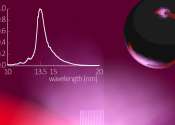Discovery of 10 phases of plasma leads to new insights in fusion and plasma science
Scientists have discovered a novel way to classify magnetized plasmas that could possibly lead to advances in harvesting on Earth the fusion energy that powers the sun and stars. The discovery by theorists at the U.S. Department ...









